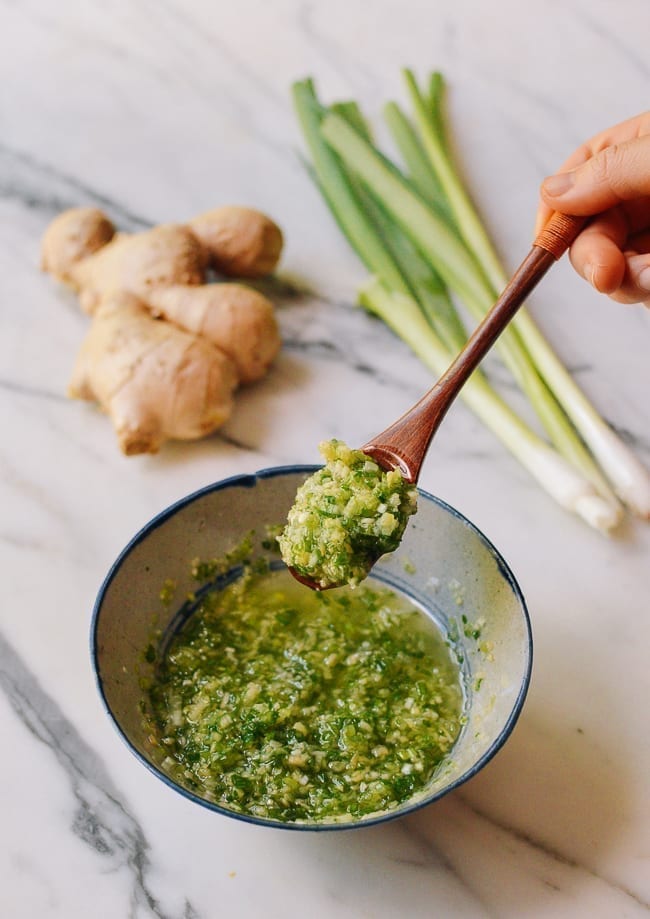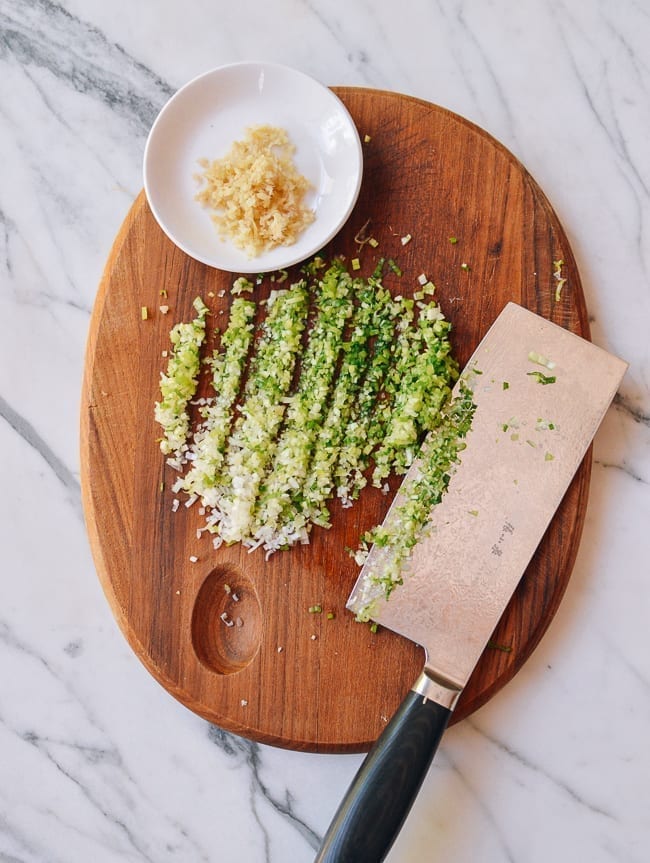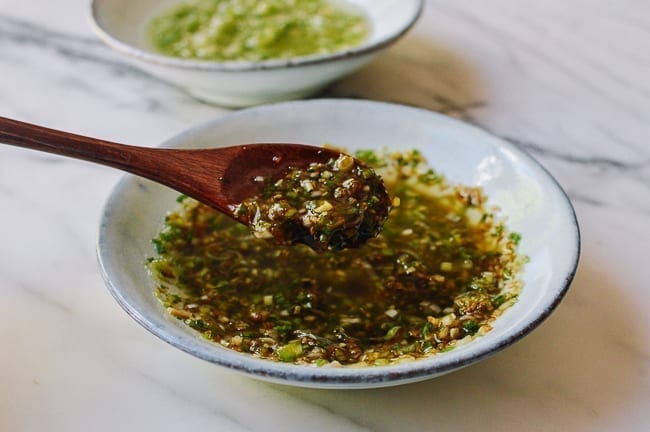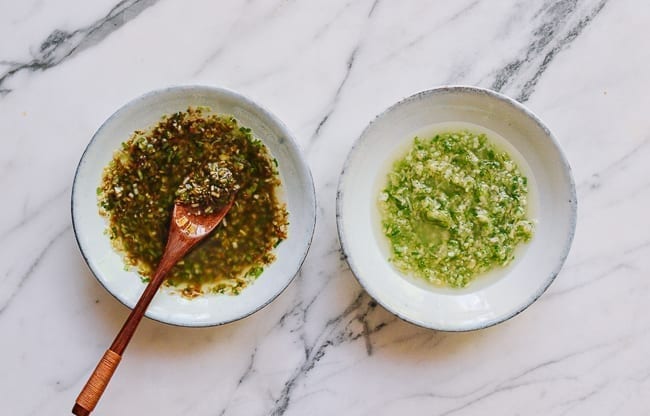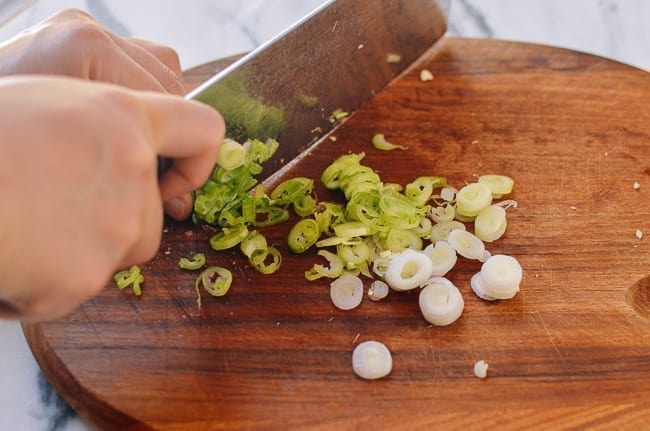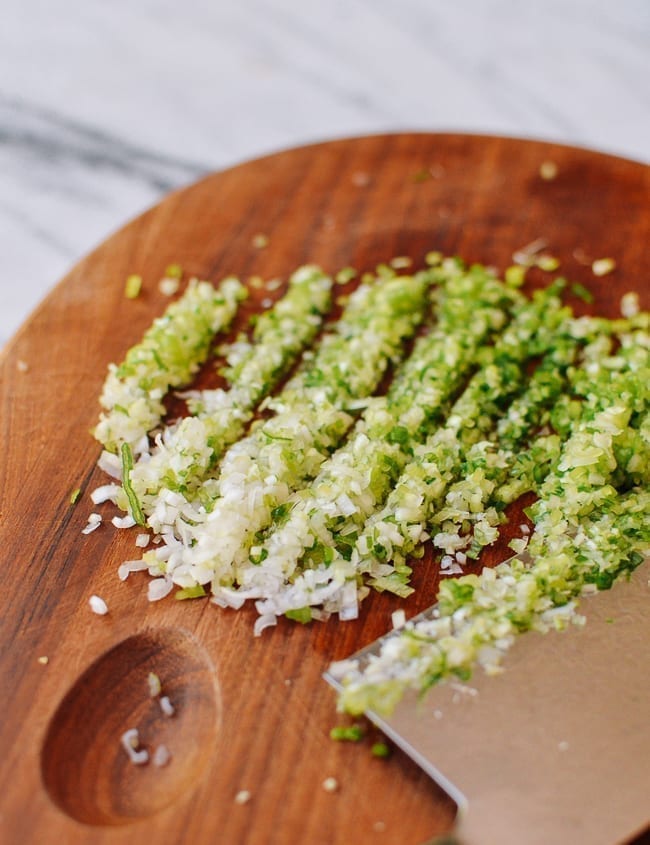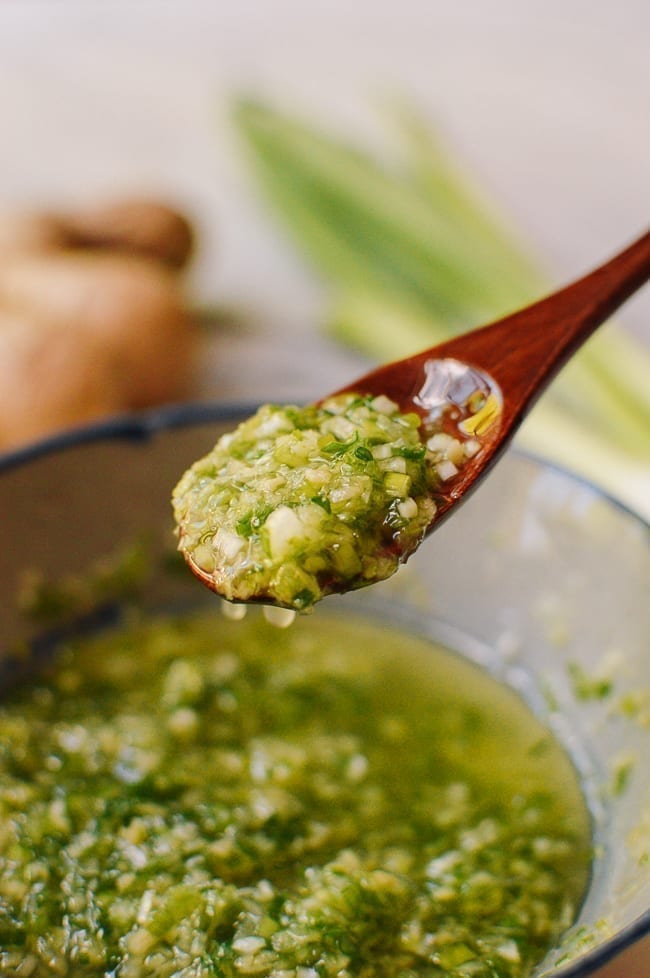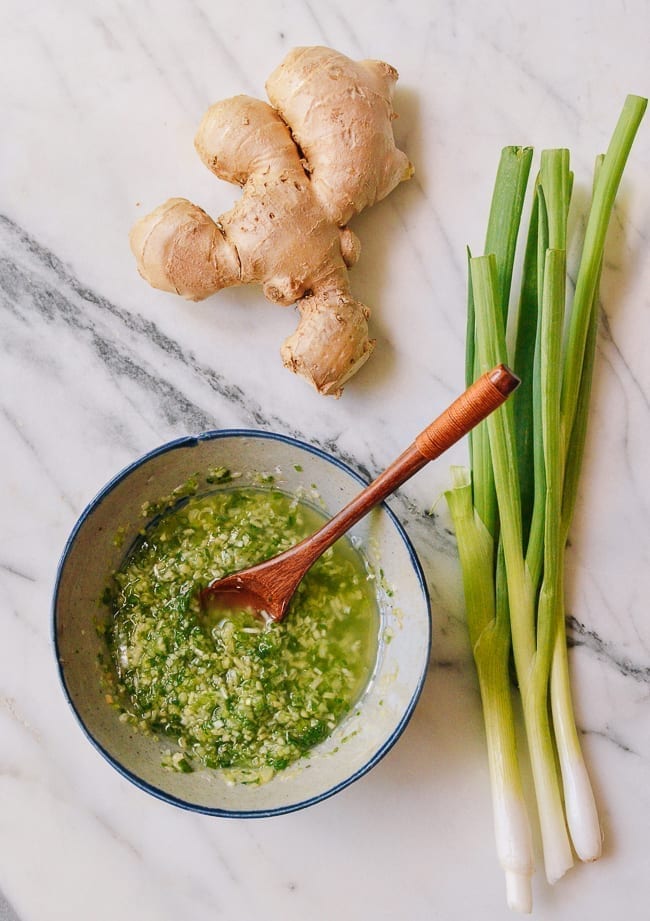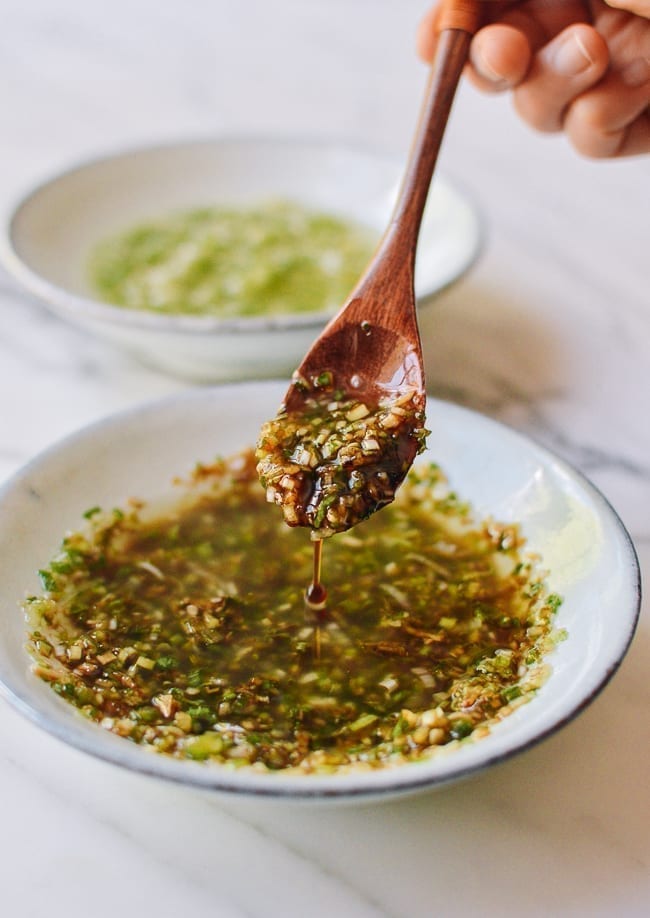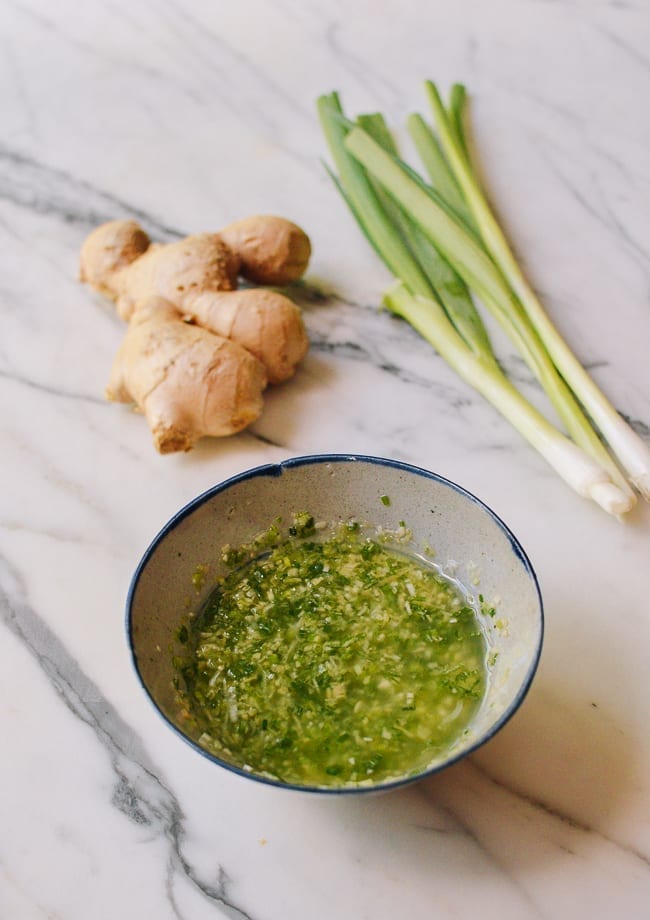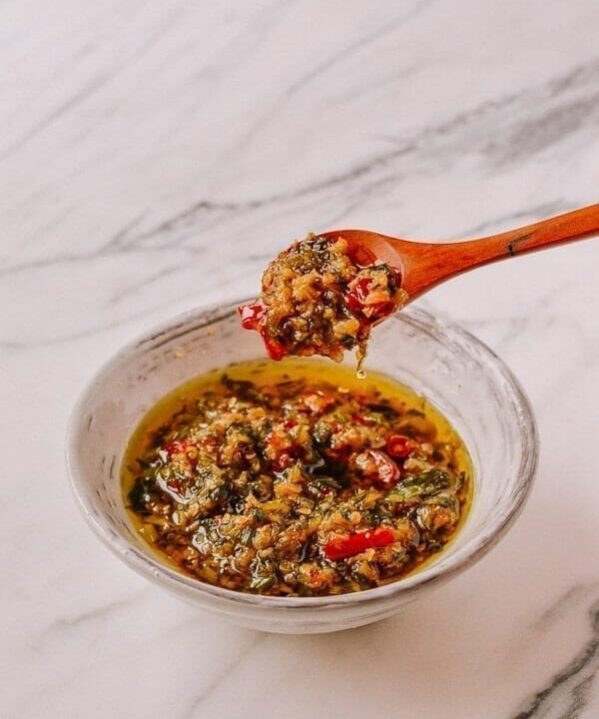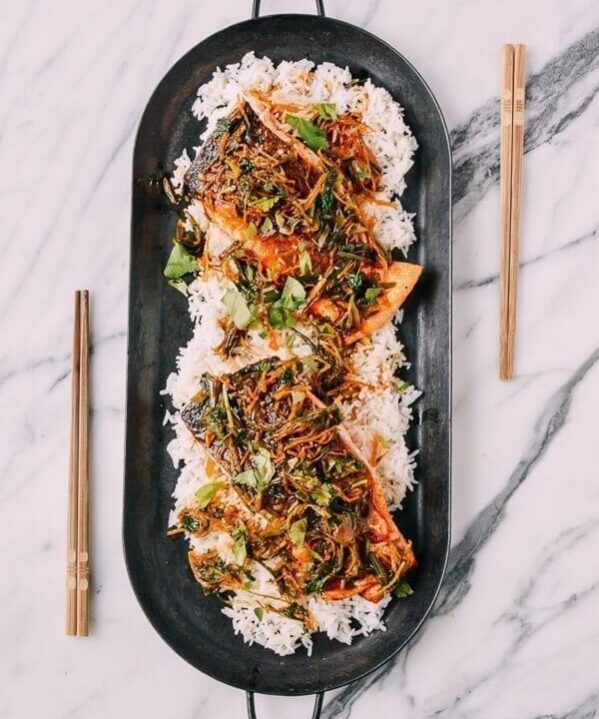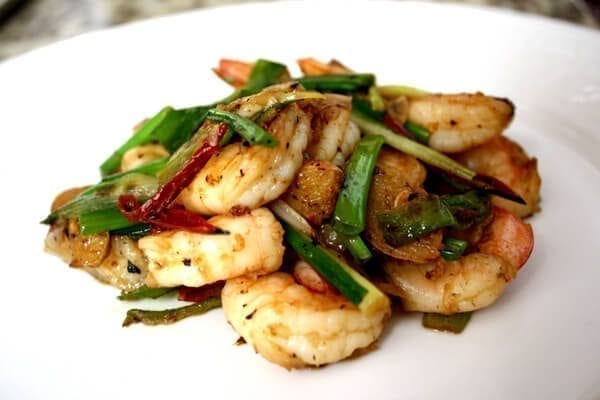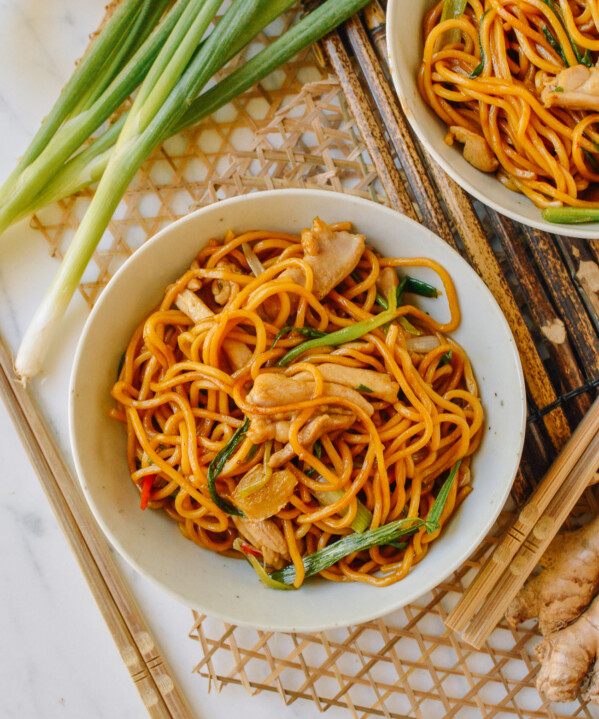Raw Ginger Scallion Oil is a deceptively simple recipe that’s an absolute must when enjoying a classic Cantonese bai qie ji (poached chicken). But I also find that it’s an addictive topping for almost anything.
Two Kinds of Ginger Scallion Oil
You may be familiar with our cooked ginger scallion oil (with chilies) that relies on hot oil to achieve a deep ginger scallion flavor. It has become a staple condiment for many of you!
This version, however, is more traditional. It represents the epitome of Cantonese cooking: pure flavors, simple preparation, and very little added spice or seasoning. It consists of raw ginger, raw scallion, oil, and salt. That’s it!
Way to Use Ginger Scallion Oil
When we recently revisited our whole poached chicken recipe, we focused on showing you how to break down and properly serve the chicken, but many of you pointed out that there was no formal recipe for the ginger scallion oil that goes alongside it!
Perhaps that was because it’s such a simple and often imprecise recipe at our house: approximately 2 parts scallion, 1 part ginger, and the rest is done by feel/to taste.
As for how you can use it, the same philosophy goes. No need to limit yourself to poached chicken, though the clean taste of the chicken is the perfect canvas for the strong flavors of the oil.
Here’s how you can use it:
- As a condiment to chicken or any meat of your choice – poached, pan-fried, or even grilled
- As a dip for tofu, for our vegans out there
- In cold noodles
- As a flavoring or topping for leafy green vegetable stir-fries
- Over plain rice with a fried egg, or fried rice!
Our Family Debate: To Soy Sauce or Not?
The Shanghainese and Cantonese sides of our family go head to head whenever a whole poached chicken hits the table.
Inevitably, we debate the merits of the plain ginger scallion oil—my dad’s preferred traditional Cantonese route—and the ginger scallion oil with a splash of soy sauce—my mother’s blasphemy. (As my dad says, the Shanghainese put soy sauce in everything.)
By now, though, my dad knows that to keep the peace, he has to prepare both versions. As for me and Sarah, we dip freely between both.
Try the plain version, spoon some of it into a separate bowl, and add a splash of light soy sauce. See which one you like better!
Recipe Instructions
Wash the scallions and pat them thoroughly dry. This will make it easier to mince them (so they aren’t as slippery). Thinly slice them into rounds…
And then use your knife to mince them further, running it over the scallions again and again. You should end up with about 4 tablespoons minced scallions.
Next, slice 10 rounds of ginger very thinly. Julienne them into matchsticks and mince them finely. (These steps could be done with a food processor.) You should end up with about 3 tablespoons minced ginger.
Combine the scallion, ginger, oil, and salt in a bowl. Mix thoroughly, and it’s ready to serve!
With poached chicken (bai qie ji), we split it into two small bowls, and add light soy sauce to one of them to taste.
Raw Ginger Scallion Oil
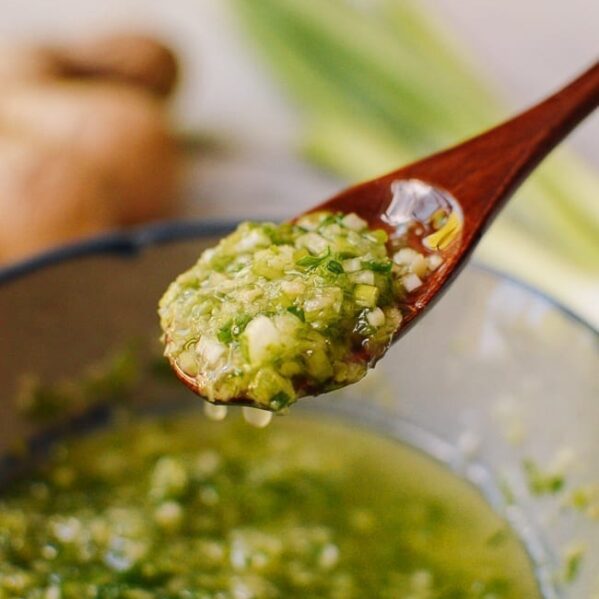
Ingredients
- 4 tbsp finely minced scallions (must have white parts, 50g, about 2 large scallions)
- 3 tbsp finely minced fresh ginger (20g, about 10 thin slices)
- 1/3-1/2 cup vegetable oil (80-120 ml)
- 1/2 teaspoon salt (or to taste)
- light soy sauce (to taste; OPTIONAL)
Instructions
- Wash the scallions and pat them thoroughly dry. Thinly slice them into rounds, and then use your knife to mince them further. You should end up with 4 tablespoons finely minced scallions.
- Next, slice 10 rounds of ginger very thinly. Julienne them into matchsticks and mince them finely. (These steps could be done with a food processor.) You should end up with 3 tablespoons finely minced ginger.
- Combine the scallion, ginger, oil, and salt in a bowl (adjusting the oil and salt to your tastes). Mix thoroughly, and it’s ready to serve!
- If we are enjoying poached chicken (bai qie ji), we split it into two small bowls, and add light soy sauce to one of them to taste.
